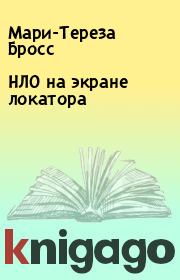Юлий Иванович Дробышев - Человек и природа в кочевых обществах Центральной Азии (III в. до н.э. – XVI в. н.э.)
 | Название: | Человек и природа в кочевых обществах Центральной Азии (III в. до н.э. – XVI в. н.э.) |
Автор: | Юлий Иванович Дробышев | |
Жанр: | Научная литература, История Азии | |
Изадано в серии: | неизвестно | |
Издательство: | ИВ РАН | |
Год издания: | 2014 | |
ISBN: | 978-5-89282-565-8 | |
Отзывы: | Комментировать | |
Рейтинг: | ||
Поделись книгой с друзьями! Помощь сайту: донат на оплату сервера | ||
Краткое содержание книги "Человек и природа в кочевых обществах Центральной Азии (III в. до н.э. – XVI в. н.э.)"
Монография посвящена истории взаимодействия с окружающей средой кочевых народов Центральной Азии: хунну, сяньби, жуаньжуаней, древних тюрков, уйгуров, кыргызов, киданей, монголов с III в. до н.э. по XVI в. н.э. Исследование нацелено на малоизученные как в отечественной, так и в мировой науке вопросы адаптации материальной и духовной культуры кочевых народов к сложным природноклиматическим условиям. Рассмотрение проблемы с двух методологических платформ – гуманитарной и естественнонаучной – позволило существенно расширить спектр исследуемых вопросов и найти ряд новых решений. На большом фактическом материале показана специфика кочевого скотоводства как основы жизнеобеспечения номадов. Освещены охота, земледелие и градостроительство кочевников. Обсуждается роль религиозного фактора в природопользовании и отношении людей к природе, много внимания уделяется идеологическим аспектам кочевых государств. Книга рассчитана как на специалистов – кочевниковедов, историков, этнологов, так и на широкую читательскую аудиторию, интересующуюся историей кочевников Центральной Азии.
Читаем онлайн "Человек и природа в кочевых обществах Центральной Азии (III в. до н.э. – XVI в. н.э.)". [Страница - 327]
people with the herds prospered. On the contrary, natural cataclysms could
be considered as a sign of disagreement of the Sky with a ruler and gave
rise to replace him with another pretender possessing the special celestial
gift – charisma.
Life of nomads amidst the steppes seems to a modern observer very
harmonious, and in some sense, it is correct: the system “Nomads and nature” is supported in a state of homoeostasis, when the necessities of people
are counterbalanced by possibilities of the environment regulating these
necessities through a culture. The homoeostasis means in this case actual
preservation of a society development, based on what some historians drew
conclusion about fundamental inability of the nomadic societies to progress.
It is enough to remember the classification of civilizations of А. Toynbee or
ideas of F. Braudel. Similar looks not finally stepped back to the past. Although they are very vulnerable for scientific criticism, we have to acknowledge that complication of a society organization, technical progress,
and so on objectively require either intensification of natural resources exploitation or its expansion. Expansion was simpler to carry out in the
steppes; therefore, the extensive way of development was typical for the
economy of nomadism. This way is also more “ecofriendly” because it assists transmission from generation to generation of experience of inexhaustible nature exploitation and the ecological traditions.
604
At the same time, a contemplative attitude to the environment also did
not take place in Inner Asia. Numerous materials testify against modern
attempts of idealization of the mutual relations between people and nature
in this history-cultural region. The attitude was fully pragmatic and first of
all dictated by the necessity of own survival. It is therefore possible to assert
that the ecological traditions served practically always directly or indirectly
to the survival and prosperity of human collectives. As a rule, outside a tribe
territory they at once stopped to work, therefore, during a military raid
against another nomadic tribe the nature was not at all insured off the inhabitants’ rude interference. For example, it was in order of things to burn out
the pastures of enemies, and the raiders hardly wanted to know whether a
nearby forest would disappear in flame. Certainly, we have no right to accuse the nomads of “tribe egoism”. The nature has programmed any type of
living creatures for self-preservation, so the humans are not an exception.
Desire of people to be full, dressed, and heated; to keep some food reserves
and feel itself out of danger is absolute natural. It strengthens anthropogenic
press on natural resources, but it is limited by the unwritten norms of traditional culture and the system of prohibitions and rules developed during
adaptation to the natural conditions, as well as by religious believes, faith in
spirits-“hosts”, etc. Nomads have found quite long ago an exit from the contradiction between desired and possible. They could realize aspiring to a
good life it was possible for account of resources of not the own land, but
alien one, for example of China. The alien nature in nomads’ eyes was deprived any value and did not enjoy the defense of the Eternal Sky and spirits-“hosts”, and as such deserved exploitation and robbery without undesired consequences. Possibly, China appeared before inhabitants of the
steppes as a barrel of various material welfares, from where it was possible
to ladle silk, grain, adornments, and all other, what one could wish. It was
necessary only to compel a Chinese emperor to open this barrel. That is why
cruelty on the border was literally erected in a cult. In XIII century nomads
in full realized their rich experience of “scorched earth” in Iran, Middle,
Central and South-Eastern Asia, Transcaucasia, Eastern Europe, Rus, and
partly in Tibet.
Foregoing allows us to conclude that the world of nomads of Inner
Asia is the special civilization with the specific material and spiritual culture adjusted to existence in difficult natural and climatic conditions and
found its own approach to exploitation of natural resources with a minimum
damage to them. Its ecological potential partly saved until now and really
can serve to the matter of harmonization of mutual relations of Man and
Nature on the vast spaces of Inner Asia.
Об авторе
Юлий Иванович Дробышев родился в 1969 г. в Москве. В 1995 г.
окончил с красным дипломом Московский городской открытый педагогический университет, а пять лет спустя защитил диссертацию на
соискание ученой степени кандидата биологических наук. Основное
место работы – Институт проблем экологии и эволюции РАН, с 2001 г.
он также является научным сотрудником Института востоковедения
РАН. С 2000 г. ежегодно выезжает в составе Совместной РоссийскоМонгольской комплексной биологической экспедиции РАН и АНМ в
Монголию, где проводит исследования по теме «Трансформация традиционного природопользования монгольских народов в современных
социально-экономических условиях».
В 2008 г. защитил диссертацию «История взаимодействия человека и природы в центрально-азиатских кочевых обществах раннего
средневековья» на соискание ученой степени кандидата исторических
наук. Исследования Ю.И. Дробышева посвящены проблемам этнической экологии (культурной антропологии) кочевых народов, их политической истории, а также идеологии кочевых государств.
Научное издание
ДРОБЫШЕВ Юлий Иванович
Человек и природа в кочевых обществах Центральной Азии
(III в. до н.э. – XVI в. н.э.)
Утверждено к печати
Институтом востоковедения РАН
Научный редактор Л. И. Лебедева
Верстка П. Л. Перепелкин
Подписано 12.02.2014
Формат 60х90/16. Бумага офсетная.
Усл. печ. л. 38. Уч.-изд. л. 36.
Тираж 500 экз. Зак. № 315
Федеральное государственное
бюджетное учреждение науки
Институт востоковедения РАН
107031 Москва, ул. Рождественка, 12
Научно-издательский отдел
Зав. отделом А. В. Сарабьев
E-mail: izd@ivran.ru
Отпечатано в ООО типографии
«Издательство МБА»
119361 Москва, ул. Озерная, 46
781-86-28, 625-38-13
--">
Книги схожие с «Человек и природа в кочевых обществах Центральной Азии (III в. до н.э. – XVI в. н.э.)» по жанру, серии, автору или названию:
 |
| Василий Васильевич Крючков - Север — природа и человек Жанр: Путешествия и география Год издания: 1979 Серия: Человек и окружающая среда |
 |
| Андрей Юрьевич Гусаров - Маршал Берия. Штрихи к биографии Жанр: История: прочее Год издания: 2015 |




